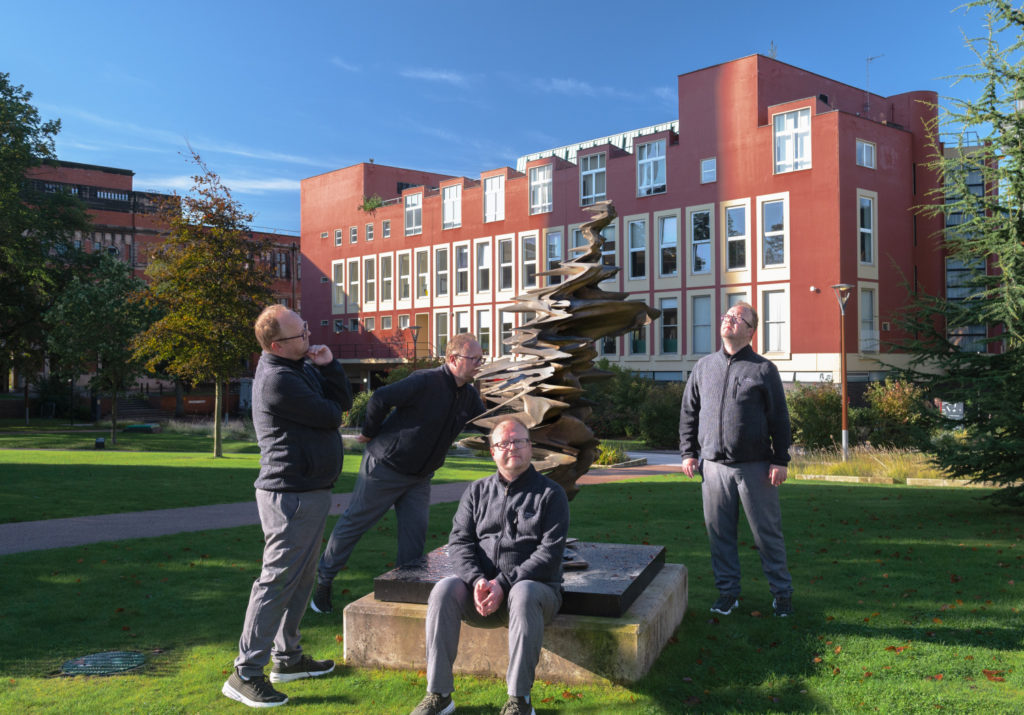[This article originally appeared in the University All Staff Briefing, whose team wrote the piece]
As the University prepares to welcome the public for the Come to Campus Community Festival on Saturday 21 June, marking our 125th anniversary, our colleagues have been reflecting on what makes our campus truly special.
For Dr Jon Mueller, Associate Professor of Endocrine Biochemistry and pharmacology lecturer, the campus is far more than a workplace, it’s a place of discovery, connection, beauty and belonging, and a source of pride when showing visitors, friends and family around.
Recruited in 2012 for his research expertise, Jon has witnessed the transformation of campus first-hand, from the demolition of the Old Library to the rise of Edgbaston Park Hotel.
“The campus has changed massively since I joined the University,” he says. “The changes have been remarkable, but the spirit of the place remains.”
People often ask how I know all this, It’s just genuine interest.

Hidden gems
When showing visitors around, Jon’s tour includes highlights such as the Public Sculpture Trail, Rowry the Allosaurus and the fluorescent minerals in the Lapworth Museum, and exhibitions across campus. His tour includes the magnificent Great Hall, and even the site of where the Metchley Roman Fort once stood, by the Medical School.
“People often ask how I know all this,” he laughs. “It’s just genuine interest.”
His favourite spot? With so many to choose from, Jon admits it’s a tough choice. But he ultimately settled on The Barber Institute of Fine Arts for both its architecture and stunning collections. It’s a regular item on his campus tours, though it’s currently closed for transformative renovations until spring 2026.
Jon reveals a lesser-known gem of the campus: The Mining Department Heraldic Shield, which is part of the Public Sculpture Trail.
“It’s my absolute hidden gem,” he says.
Mining was among the first subjects taught after the Royal Charter in 1900, and the University’s model mine, built in 1905, still lies beneath the Edgbaston campus. As Jon put “It’s absolutely fantastic to think of all the tunnels and mine galleries at different levels, that are just under our feet, until this very day.”
The University’s civic mission was to train those at the forefront of industry in the region. This commitment to the city remains at the heart of the University’s mission 125 years later, with a pledge of recommitment taking place earlier in the year.
You haven’t been to the University of Birmingham, if you hadn’t had a tour of the campus by Jon.
Jon’s passion extends to the campus wildlife too, especially the peregrine falcons nesting in Old Joe.
“We should name them and install a webcam,” he laughs.
Jons also speaks fondly of graduation ceremonies in the Great Hall, and the annual multi-faith Carol Service in December. He values the social side of campus, and its many spots for coffee catch ups. One summer he even took on a challenge with a student to meet at a different place on campus, every day.
His love of the campus is evident in his tours, with one academic visitor saying: “You haven’t been to the University of Birmingham, if you hadn’t had a tour of the campus by Jon.”

Take part in the Public Sculpture Trail

Read about our resident Peregrine Falcons

Find out about our civic pledge
Community Festival
As we gear up for the Come to Campus Community Festival on Saturday 21 June, Jon’s reflections remind us of the richness and beauty of our campus. Whether you’re new to Birmingham or have been here for years, the festival is a chance to see campus through fresh eyes, and a great opportunity to share it with family and friends.
The day promises a fantastic line-up of events, including captivating talks and family-friendly activities. You can get up close with groundbreaking research activities, join the Birmingham BabyLab for playful, sensory activities that explore how little ones grow and learn, and head to the Green Heart amphitheatre for games and downtime, as well as tasty treats from the onsite food stalls.
Don’t miss out on the new exhibition in Aston Webb highlighting the University’s history, which will also be open for visitors to explore, as well as Lapworth Museum of Geology and Winterbourne House and Garden.
